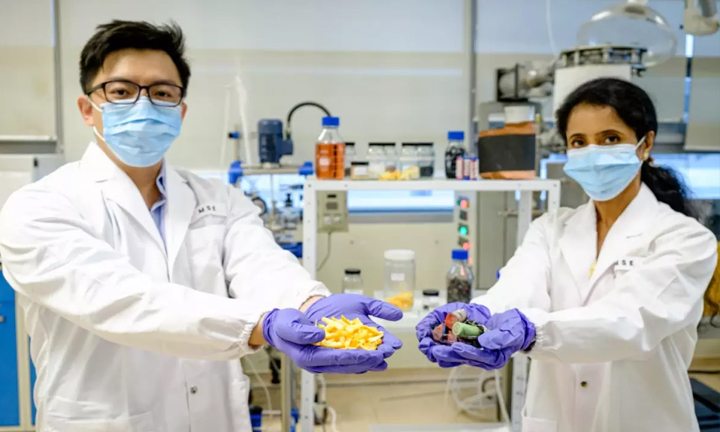SOURCE: Ben Coxworth, New Atlas
Just because a lithium-ion battery no longer holds a charge doesn’t mean it no longer holds any value. It still contains useful metals, which can now be reclaimed via a more eco-friendly technique – the key ingredient is orange peel waste.
Ordinarily, in a smelting process, spent lithium batteries are heated to over 500 ºC (932 ºF). This causes the contained metals to melt and run out of them. Those metals are then collected and reused. However, not only does the process require a lot of energy, but it also produces toxic gases.
One possible alternative involves shredding and crushing used batteries, then precipitating the metals from them by adding acids and hydrogen peroxide while heating the mixture. This still-experimental technique, known as hydrometallurgy, is more environmentally friendly than smelting. However, on an industrial scale, it could still produce a significant amount of pollutants.
With that limitation in mind, scientists at Singapore’s Nanyang Technological University tried using orange peels instead of the usual acids and hydrogen peroxide. More specifically, they utilized oven-dried orange peels that had been ground into a powder, combined with citric acid obtained from citrus fruit.
Doing so, the researchers were able to extract about 90 percent of the lithium, cobalt, nickel and manganese from spent lithium-ion batteries. This level of efficiency is roughly what had been achieved previously. Importantly, though, when using the orange peels, the residue was found to be non-toxic.
“The key lies in the cellulose found in orange peel, which is converted into sugars under heat during the extraction process,” says Asst. Prof. Dalton Tay, one of the leaders of the study. “These sugars enhance the recovery of metals from battery waste. Naturally occurring antioxidants found in orange peel, such as flavonoids and phenolic acids, could have contributed to this enhancement as well.”
The researchers used the reclaimed metals in new lithium-ion batteries, that have a charge capacity similar to that of commercially available models. Further testing is now being conducted, to see if the new batteries last for a comparable number of charge/discharge cycles.
A paper on the research, which is being co-led by Prof. Madhavi Srinivasan, was recently published in the journal Environmental Science & Technology.

